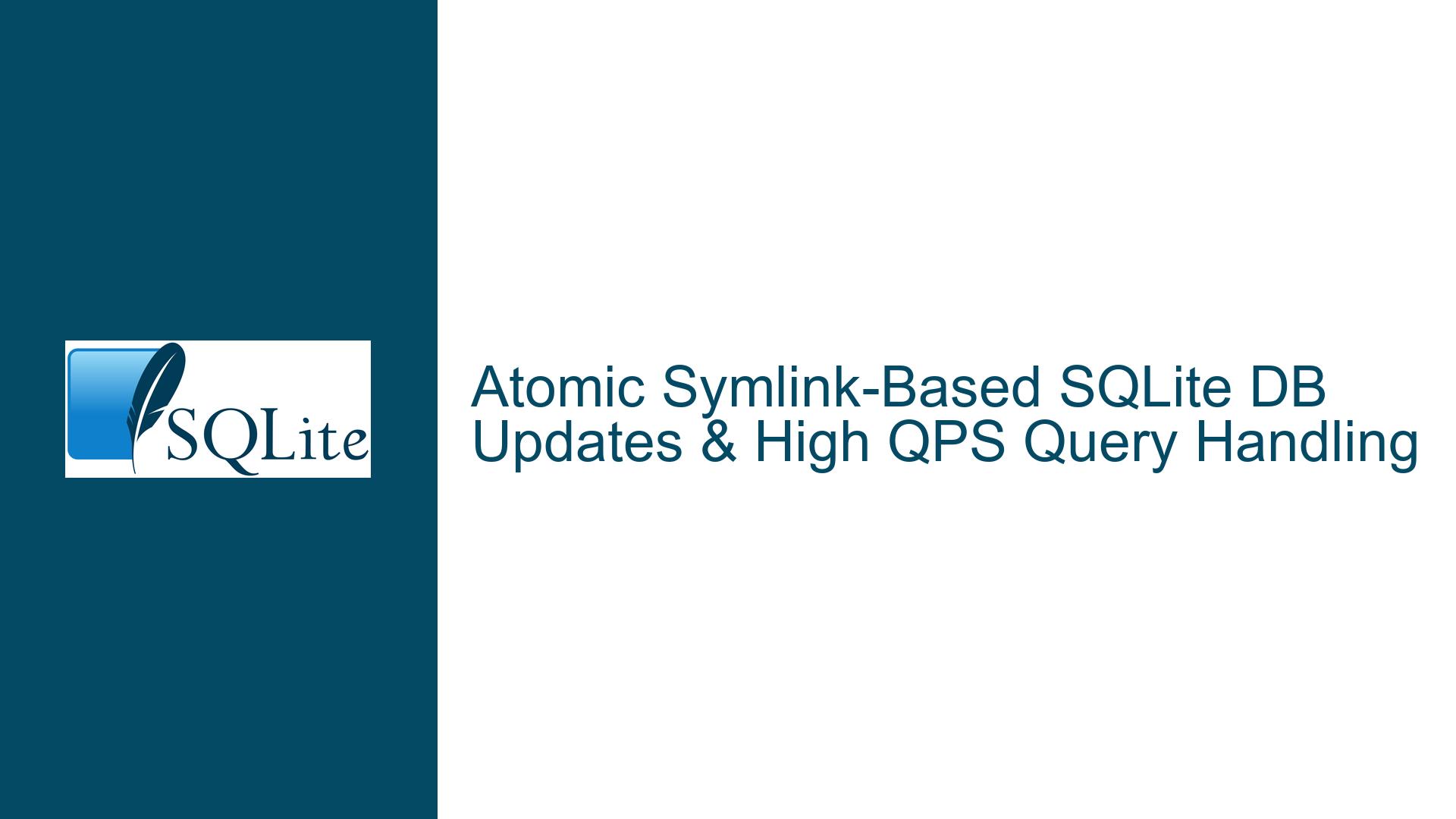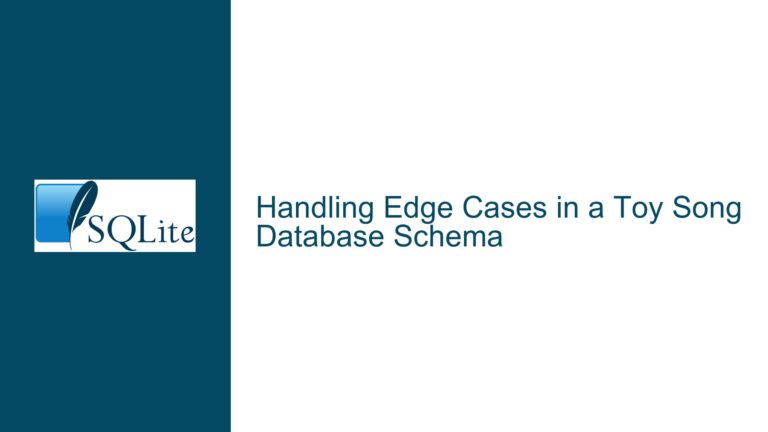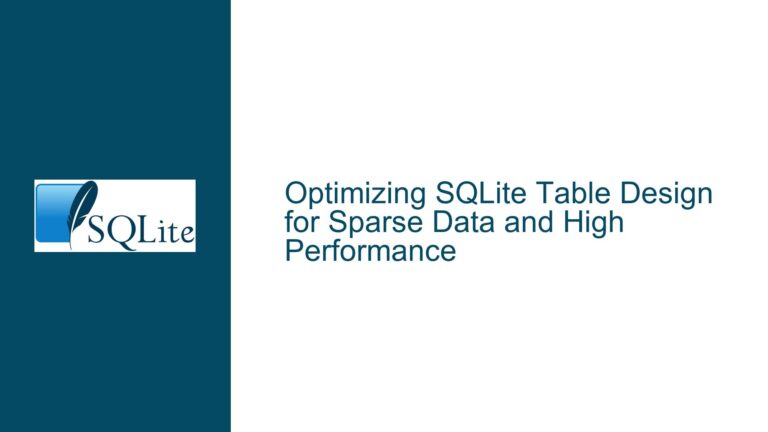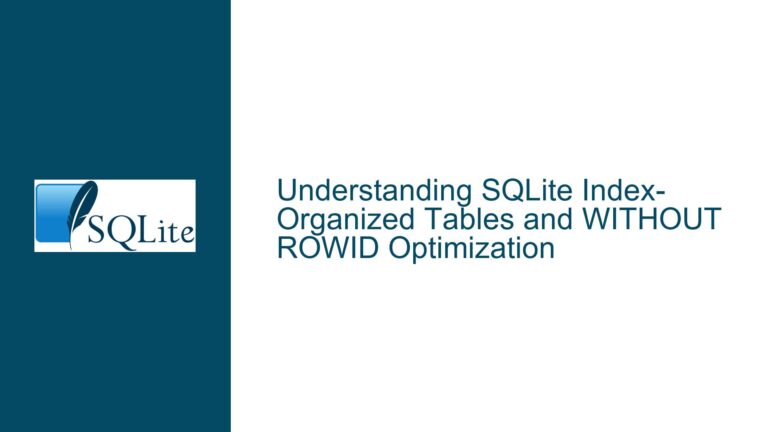Atomic Symlink-Based SQLite DB Updates & High QPS Query Handling
Symlink-Based Database Update Strategy for Atomic Switching
The core challenge in this architecture revolves around maintaining a pipeline that generates a new SQLite database file every 24 hours while ensuring seamless access to the most recent data through a frontend layer. The proposed design uses symbolic links (symlinks) to dynamically point to the latest database file. This approach hinges on atomic filesystem operations to switch the symlink target without interrupting concurrent read operations from the frontend.
A critical technical nuance lies in the atomicity guarantees of filesystem operations. When replacing a symlink pointing to the current database (e.g., current_db.sqlite) with a new one, naive implementations might first delete the old symlink and then create a new one. This creates a race condition: during the deletion phase, the symlink temporarily ceases to exist, causing queries to fail. The correct method involves creating a new symlink with a temporary name (e.g., current_db.sqlite.tmp) and atomically renaming it to the target name (current_db.sqlite) using the rename system call. On Unix-like systems, rename guarantees atomicity even if the target exists, ensuring there is no window where the symlink is missing.
The frontend layer interacts with the symlink rather than the actual database file. When a query arrives, the frontend resolves the symlink to the underlying database file and opens it. To ensure freshness, the frontend must verify whether the symlink target has changed since the last query. If the symlink remains unchanged, the existing database connection can be reused. However, if the symlink has been updated, the frontend must close the old connection and reopen it using the new target.
This architecture introduces two competing priorities: atomicity of symlink updates and performance overhead from frequent database reopening. The former is solved through filesystem primitives, while the latter requires careful handling of database connections. SQLite’s transactional guarantees and file locking mechanisms complicate this further, as concurrent processes accessing the same database file must adhere to strict locking protocols to avoid corruption.
Risks of Non-Atomic Symlink Updates and Concurrent Access Corruption
The primary risks in this design stem from non-atomic symlink updates and improper handling of database connections. If the symlink update process does not use atomic renaming, the frontend may encounter missing symlinks during the update window. For example, deleting the old symlink before creating a new one introduces a temporary gap where current_db.sqlite does not exist. Frontend processes attempting to resolve the symlink during this window will fail with "file not found" errors. This violates the requirement for uninterrupted query availability.
A more insidious risk arises from multiple processes accessing the same database file through different paths. SQLite’s documentation explicitly warns against using hard or soft links (symlinks) to the same database file. When multiple processes open the database via different symlinks, SQLite’s file locking mechanisms may fail to detect concurrent access. For instance, if Process A opens /path/db_2023.sqlite directly and Process B opens /path/current_db.sqlite (a symlink to the same file), SQLite’s lock files (e.g., db_2023.sqlite-wal) may not be properly shared between the two processes. This can lead to database corruption, especially if one process writes to the database while others read from it.
Even in read-only scenarios, symlinks pose risks. If the database is replaced while a frontend process holds an open connection to the old file, subsequent queries may read from an outdated or deleted file. Worse, if the old database file is deleted from the filesystem but still held open by a process, the operating system may keep the file’s data intact until all handles are closed. This creates a scenario where different frontend processes read from different database versions, violating consistency guarantees.
The interplay between filesystem semantics and SQLite’s locking mechanisms amplifies these risks. SQLite relies on advisory locks managed at the filesystem level. When a database is opened via a symlink, the locks apply to the symlink’s inode rather than the target file’s inode. If two processes access the same physical file through different symlinks, they will use different inodes for locking, effectively bypassing SQLite’s concurrency controls. This can result in unrecoverable corruption if not mitigated.
Mitigating Performance Overhead from Frequent Database Reopening
The requirement to reopen the database on every query to ensure freshness introduces significant performance penalties. Opening a SQLite database involves parsing the schema, initializing internal data structures, and acquiring file locks—operations that are costly at high query-per-second (QPS) rates. A naive implementation that opens and closes the database for each query will struggle to scale beyond trivial workloads.
A viable optimization involves tracking the database file’s inode number to detect changes without reopening the file. When the frontend first opens the database, it invokes the fstat system call to retrieve the file’s inode number and stores it. Before executing subsequent queries, the frontend calls stat on the symlink to obtain the inode number of the currently pointed database. If the inode number differs from the cached value, the frontend closes the old connection and reopens it using the new symlink target. This reduces the frequency of database reopening while ensuring queries always access the latest data.
Inode-based change detection must account for edge cases, such as inode reuse. Filesystems may recycle inode numbers after files are deleted, creating a false positive if a new database coincidentally receives the same inode as a previous one. However, the likelihood of this occurring within a 24-hour update cycle is negligible on most systems. For added safety, the frontend can compare both the inode number and the file’s modification timestamp (st_mtime).
Connection pooling offers another layer of optimization. Instead of closing the old database connection immediately upon detecting a change, the frontend can maintain a pool of connections to recent database versions. Queries are routed to the most recent connection, while older connections are evicted after a grace period. This approach amortizes the cost of reopening databases across multiple queries and reduces latency spikes during symlink updates. However, it increases memory usage and complexity, as the frontend must manage multiple concurrent connections.
Ultimately, the choice between these strategies depends on the specific workload. For read-heavy environments with infrequent updates, inode-based change detection suffices. For high-throughput systems where milliseconds matter, connection pooling with graceful degradation during updates provides a balanced solution. Regardless of the approach, rigorous testing under realistic load conditions is essential to validate performance and correctness.





